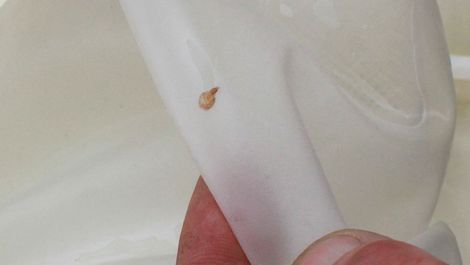News / Salmon industry pledges to be more open
RECORDS of sea lice numbers in salmon farms across Scotland are set to be made available publicly for the first time following a commitment by the Scottish Salmon Producers’ Organisation (SSPO).
The announcement was made by general manager Davie Sandison on Tuesday while giving evidence to a Scottish Parliament committee which is looking into the environmental impact of salmon farming.
Sandison, who is also a councillor for the Shetland Central ward, said it is now time to “move the debate forward” and have an “open, honest dialogue” about the state of salmon farms across the country.
Sea lice infestation is one of the biggest challenges the salmon farming industry faces as it can cause havoc among farmed fish.
“I’d like to confirm for the committee’s benefit and the wider public, the industry has been chasing for a long time now about supplying information on sea lice numbers in the farms in Scotland, and I can confirm that from here on forthwith we will be publishing all data associated with sea lice counts on farms on a farm by farm basis in Scotland,” Sandison said.
“This backs up the decision of the industry SSPO board that was taken in November last year, and is now in the public domain.”
When asked by committee chairman Graeme Dey MSP why the organisation has made this decision, Sandison replied:
“We hear all the arguments, all the background noise, but we want to have a proper, open, honest dialogue about the actual status of farm sites in Scotland, and if we feel, or people feel, that data can be of use to the scientific and research community and can move us forward, then fine.
“Absolutely no problem whatsoever in being completely open and transparent with that data. There’s nothing whatsoever that we wish to hide away.”
Become a member of Shetland News
Sea lice figures were published last year at the request of campaigners after the Scottish information commissioner ruled that ministers unlawfully tried to withhold information naming fish farms that had breached trigger levels for the number of adult female sea lice on farmed salmon.
Salmon and Trout Conservation Scotland said the figures showed that sea lice numbers were “running out of control in much of the industry for extended periods”.
Grieg Seafood Shetland was named as the worst performing company in Scotland, with prevalence as high as 22 parasites on one fish.
The news that figures will be readily published was welcomed by Sandison’s fellow speakers, John Aitchison of Friends of the Sound of Jura and Sam Collin, who is the marine planning officer at the Scottish Wildlife Trust.
But Aitchison said the move was “forced by the information commissioner, enforcing a decision which the government refused to do” because the industry didn’t want to reveal the data.
Collin asked whether historical data would be released, as it would mean “we can begin with a wealth of data and start making changes now.”
Sandison said figures have been “published in regional format for the last five or six years, in quite big detail, so I think we need to look at that data”.
He added that there will likely be a delay on data being released because it “takes time to gather and check data” before it can be disseminated.
The mechanics of releasing the data is set to be discussed by the Scottish Government’s strategic farmed fish health framework working group.
The Scottish Environmental Protection Agency confirmed last year that it would tighten the conditions for the use of emamectin, a chemical fed to salmon to destroy sea lice, after evidence emerged that it caused toxic pollution.
A number of methods have been employed by salmon farm operators in an attempt to combat sea lice infestation, including the deployment of thermolicer and hydrolicer technology, as well as lumpsucker fish.
Become a member of Shetland News
Shetland News is asking its many readers to consider paying for membership to get additional features and services: -
- Remove non-local ads;
- Bookmark posts to read later;
- Exclusive curated weekly newsletter;
- Hide membership messages;
- Comments open for discussion.
If you appreciate what we do and feel strongly about impartial local journalism, then please become a member of Shetland News by either making a single payment, or setting up a monthly, quarterly or yearly subscription.




























































